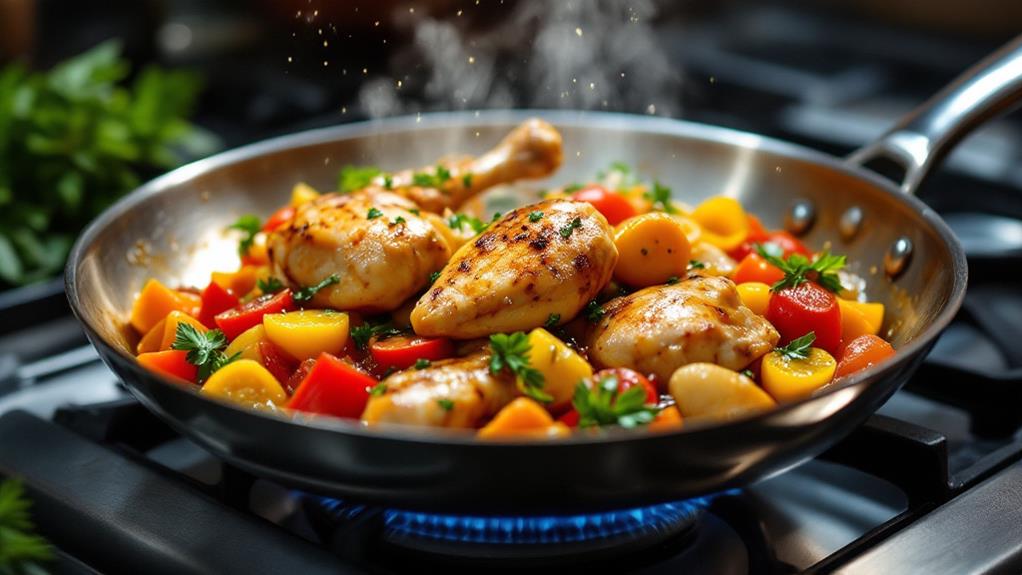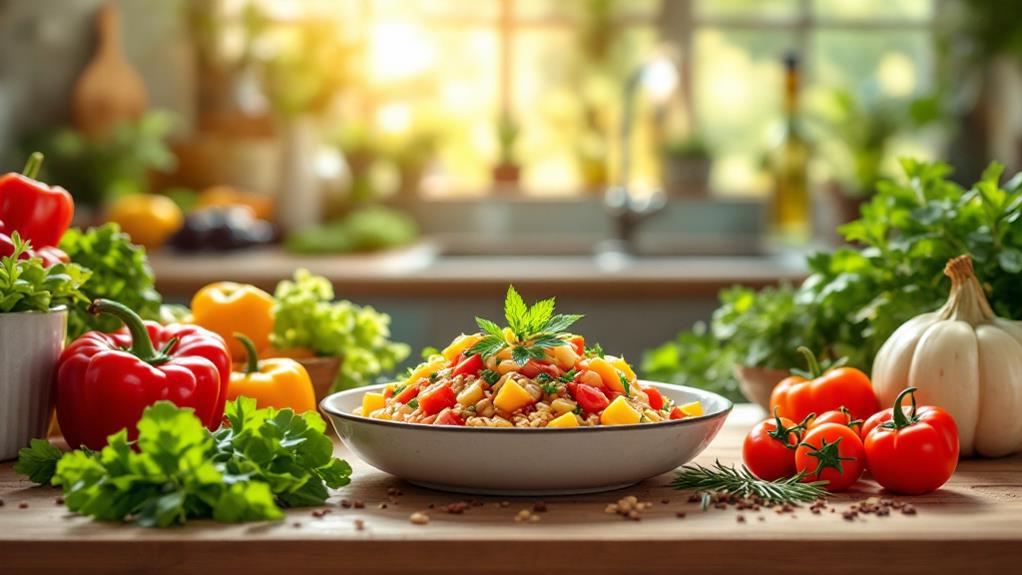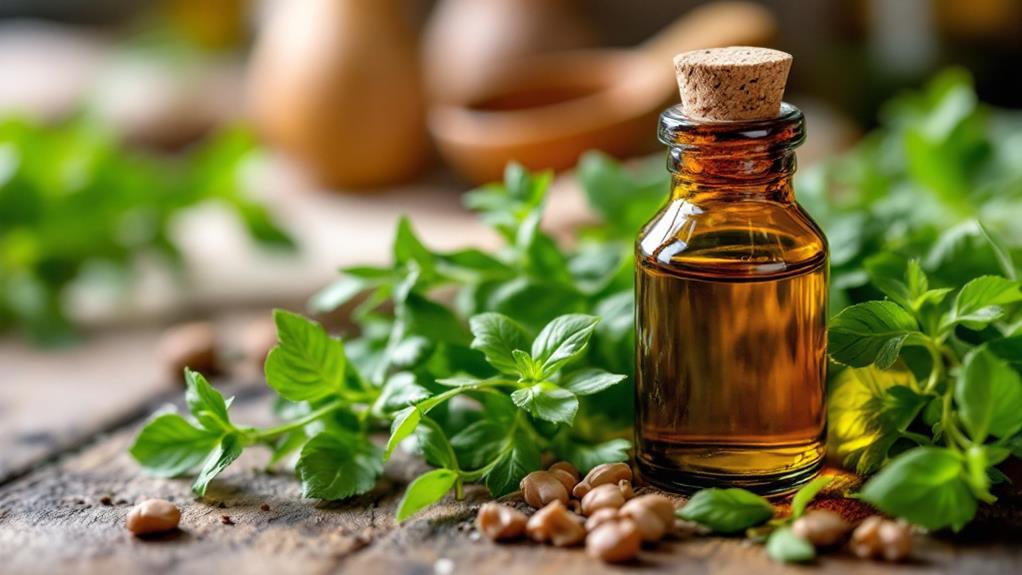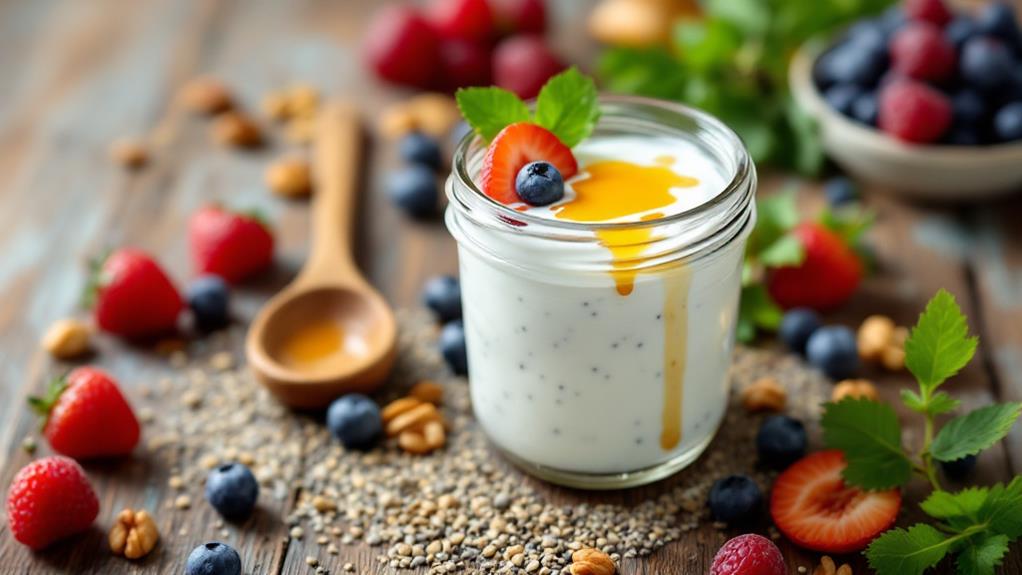Magnolia Flowers in Cooking and Health: How to Use Them
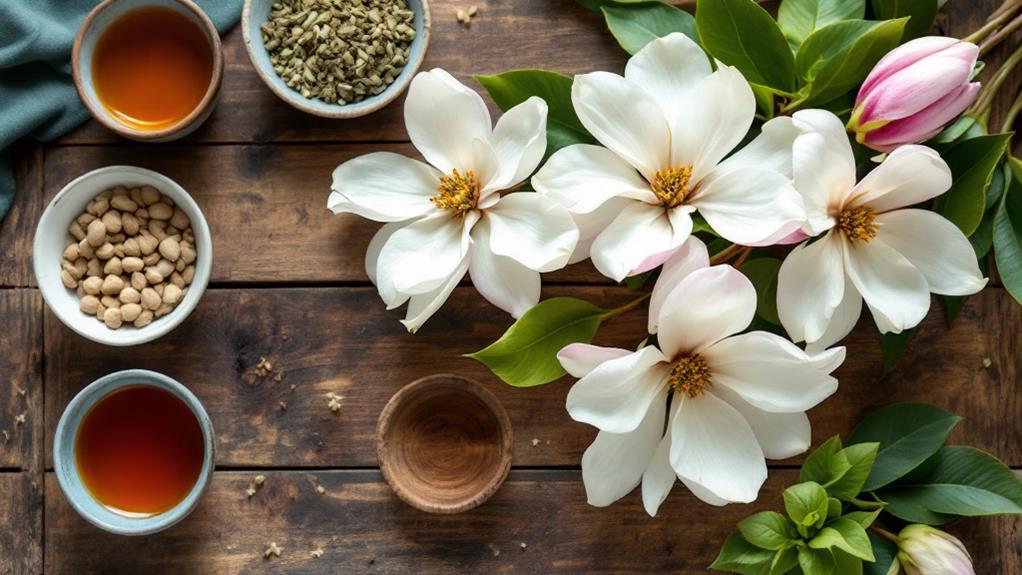
Uncover the unique flavors and health perks of magnolia flowers in your kitchen. Harvest fresh petals from species like M. grandiflora and M. soulangeana for their ginger-cardamom flavor. Use them in salads, dried for tea, or create a tangy pickled condiment. Magnolia syrup offers a sweet twist for desserts, while petals improve dishes like risotto and dumplings. For health, some compounds may reduce anxiety and inflammation. Confirm you correctly identify edible varieties and harvest young petals for the best taste. Stick around to find tips on proper foraging, preserving techniques, and more culinary inspiration.
Exploring Magnolia Edibility
Regarding exploring the edibility of magnolia flowers, you're in for a flavorful experience. Magnolia flowers, particularly from species like Magnolia grandiflora and Magnolia soulangeana, are edible and can add an intriguing twist to your culinary creations. Edible magnolia offers a unique ginger flavor, reminiscent of cardamom, which can improve dishes in delightful ways. When considering culinary uses, it's significant to know that you can enjoy the fresh petals in salads or even as pickled magnolia, which preserves their taste for longer enjoyment.
To make the most of your experience, you should harvest the petals in the bud stage or just before they fully open. This timing avoids bitterness and delivers the most potent flavors. Darker pink varieties often yield stronger flavors, while white ones offer a subtler taste. It's essential to identify edible species correctly, as not all magnolias are safe for consumption. Misidentification could lead to oral irritation, so exercise caution. Furthermore, magnolia petals can be dried as spice, bringing a cardamom-like flavor to both baked goods and savory dishes. Accept the versatility and savor the aromatic qualities that edible magnolia brings to your table.
Culinary Uses of Magnolia
Magnolia-flower cuisine offers a unique twist on traditional dishes with its distinctive ginger-cardamom flavor profile. Magnolia petals, as edible flowers, bring an exotic taste to your culinary repertoire. Fresh petals from varieties like Magnolia grandiflora and Magnolia soulangeana can be tossed into salads, instantly uplifting them with a rejuvenating ginger-cardamom twist. If you're looking for a new way to improve your dishes, consider using dried magnolia petals. They can be infused into teas or a simple syrup, allowing you to enjoy their delightful cardamom-like essence in your favorite beverages and desserts.
Pickling magnolia flowers is another exciting culinary use. By combining rice wine vinegar, sugar, and salt, you can create a tangy condiment that pairs beautifully with sushi and cheeses. This method not only improves their unique flavor but also adds a lively touch to your meals. Magnolia syrup, infused with the petals, is perfect for sweetening desserts and drinks, and it has the added benefit of a long shelf life when refrigerated.
The versatility of magnolia petals doesn't stop there. Incorporate them into risottos and dumplings to not only improve flavor but also add an elegant presentation to your dishes.
Health Benefits of Magnolia
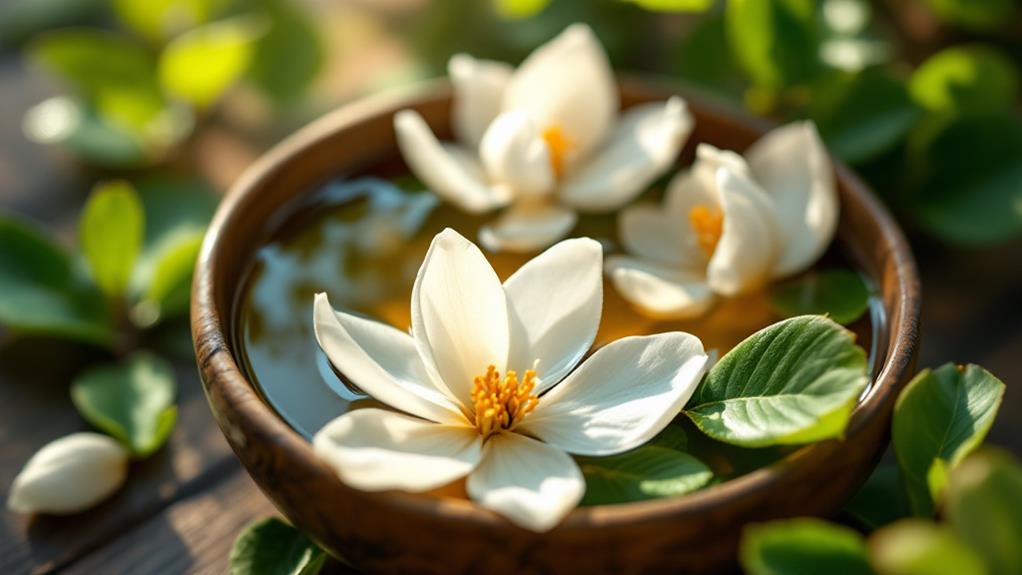
How can magnolia benefit your health? Magnolia, especially the bark of Magnolia officinalis, has long been a staple in herbal medicine. One of its most notable health benefits is its potential anti-anxiety effects, which can help improve sleep quality and calm the mind. If you're looking for natural ways to manage stress, incorporating magnolia into your routine might be worth considering.
The health benefits of magnolia don't stop there. Magnolia flowers contain compounds with antioxidant properties. These antioxidants can help reduce inflammation, supporting comprehensive health. They may even play a role in protecting your body from oxidative stress, which is linked to multiple chronic diseases.
Magnolia is also renowned for its traditional remedies, having been used historically to alleviate headaches and allergies. Its medicinal uses extend to digestive health as well. Bioactive compounds in magnolia may aid in treating digestive disorders and obesity, making it a flexible herbal remedy.
Furthermore, emerging research suggests that magnolia extracts might have applications in cancer treatment, though more studies are needed to confirm their efficacy. Exploring the potential of magnolia could add a valuable dimension to your wellness regimen.
Foraging Tips and Safety
When foraging for magnolia flowers, it's important to correctly identify edible species like Magnolia grandiflora, M. kobus, and M. soulangeana since not all varieties are safe to eat. To consume safely, harvest young magnolia petals either in the bud stage or just before they open. Older petals can become bitter and may irritate your mouth and throat. Remember moderation is key; magnolias have strong flavors, and some people might experience allergies.
Before using them, thoroughly wash petals to remove dirt and potential contaminants. If you're planning to store the petals, consider pickling preservation. This method extends their shelf life and reduces the risk of botulinum bacteria, which can be a concern with improper preservation techniques.
Foraging tips include engaging with local foraging communities, which can provide valuable insights and support. You might also take courses focused on safe foraging practices. Sustainable harvesting is vital—only take what you need to avoid harming the plants or the local ecosystem. By following these guidelines, you can enjoy the benefits of magnolia flowers while ensuring safety and sustainability in your foraging practices.
Flavor Profiles and Varieties
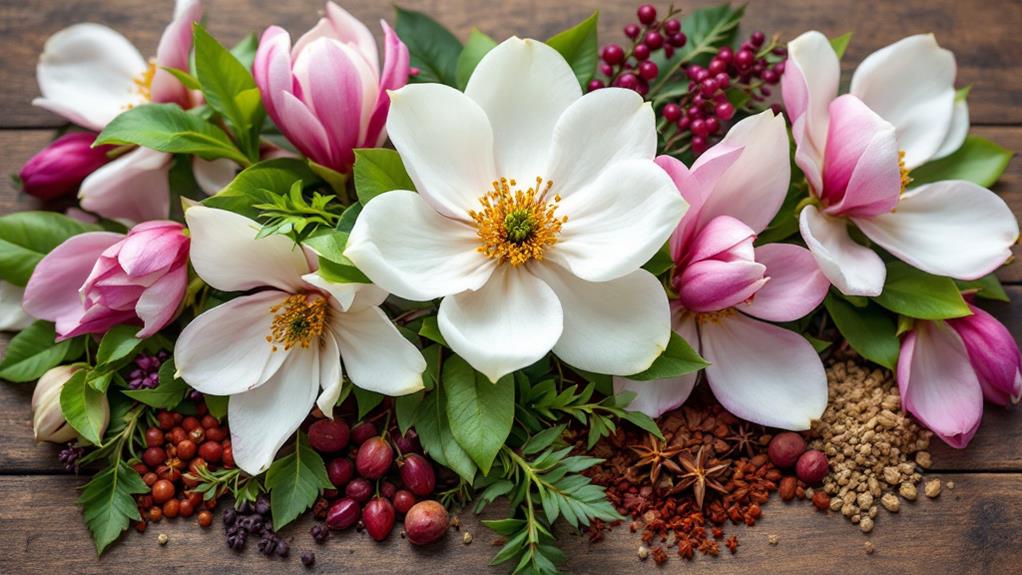
Exploring the flavor profiles of magnolia flowers reveals a delightful variety that's sure to intrigue your palate. These flowers offer a spectrum of tastes, from the ginger and cardamom notes of pink and white varieties to the bold, bitter, gingery-chili tones found in darker pink blooms. Foraging for the right petals is essential, and selecting the best edible species, like Magnolia grandiflora and Magnolia soulangeana, can improve your culinary use of these blossoms.
Magnolia grandiflora is favored for its robust flavor, while Magnolia soulangeana provides milder, more balanced notes, making it ideal for those new to cooking with magnolias. Fresh petals are best harvested when in the bud stage or just prior to opening, as this is when they're most flavorful. As the petals mature, they tend to develop a bitterness that can overpower dishes.
When foraging, look for bi-colored or mid-light pink flowers, as these typically offer the most agreeable flavor profiles. Remember, proper identification of edible species is vital—stick to known safe varieties like M. grandiflora, M. kobus, and M. soulangeana to guarantee your culinary creations are both delicious and safe.
Recipes With Magnolia Flowers
The expedition from understanding flavor profiles to crafting delightful dishes with magnolia flowers offers an exciting culinary adventure. With their unique ginger-cardamom flavor, magnolia petals are not only edible but also incredibly adaptable. Start by adding fresh petals to salads. They pair beautifully with bitter greens and soft cheeses, elevating your dish with their distinct taste.
For a sweet twist, try making magnolia simple syrup. Simmer 25g of fresh petals with sugar and water to create about 250ml of syrup. This fragrant concoction is perfect for drizzling over desserts or mixing into cocktails, adding a floral flavor that's hard to resist.
Magnolia tea is another delightful recipe to investigate. Steep fresh or dried petals in boiling water for about 10 minutes. The result is a subtle, aromatic beverage that's both soothing and potentially beneficial for your health.
If you're in the mood for a savory touch, experiment with dried magnolia petals as a spice. Grind them to bring cardamom-like notes to baked goods or rice dishes. These recipes showcase the incredible adaptability of magnolia flowers, inviting you to investigate their flavors in different culinary creations.
Pickling Magnolia Petals
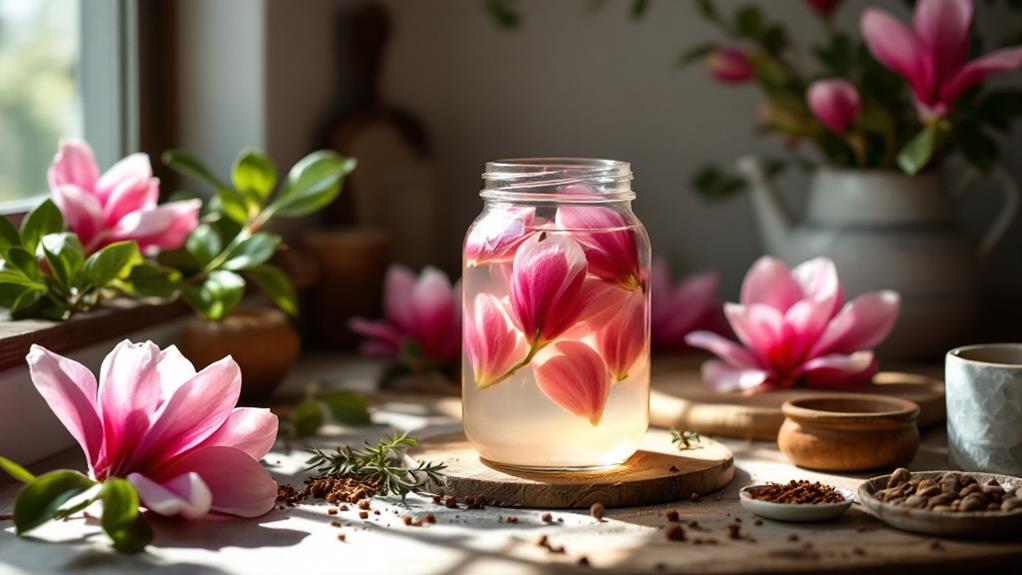
Pickling magnolia petals is an intriguing way to enhance their unique flavor, transforming them into a versatile culinary ingredient. Begin with young magnolia flowers, which offer the best texture and flavor for pickling. Initially, wash and sterilize your jars to guarantee the longevity of your pickled magnolia. Then, remove the bitter central ovaries from the petals, as this step is essential for maximizing their culinary potential.
Next, prepare a vinegar solution using rice wine vinegar, sugar, and salt. You can experiment with different ratios to adjust the flavor profile to your liking. Submerge the petals completely in the vinegar solution, confirming they're fully covered, which helps them absorb the flavors effectively. The pickling process is relatively quick, taking just 2-3 days, and results in petals with a taste similar to Japanese pickled ginger.
Once ready, these pickled magnolia petals have a shelf life of 6-12 months, making them an excellent supplement to your pantry. Their versatility shines as a complement to sushi, bread, and cheese. By experimenting with the ingredients, you can tailor the taste to suit your personal preferences, revealing their full culinary potential.
Seasonal Foraging Insights
When seeking the freshest magnolia flowers, timing your foraging to coincide with spring's bloom is vital. Typically, around April, magnolia flowers burst forth before the leaves, making it the perfect time to harvest these fragrant blooms. Ideal edible species include Magnolia grandiflora, Magnolia kobus, and Magnolia soulangeana. It's important to exercise caution and proper identification during your foraging adventures to guarantee you're gathering the right magnolia flowers.
Harvesting young petals at the bud stage is key because they offer a milder and less bitter flavor compared to older petals, which become increasingly bitter. These young petals can be a delightful supplement to your seasonal cooking, enhancing salads and different dishes. Dried petals can be used as a spice or flavoring agent, showcasing the versatile culinary applications of magnolia flowers.
Foraging courses can be invaluable, providing you with the skills and knowledge needed to confidently identify and harvest magnolia flowers. These courses often offer insights into safely incorporating magnolias into your cooking, assuring a delicious and safe culinary experience. By understanding the nuances of seasonal foraging, you can fully appreciate the unique flavors these flowers bring to the table.
Engaging With Foraging Communities
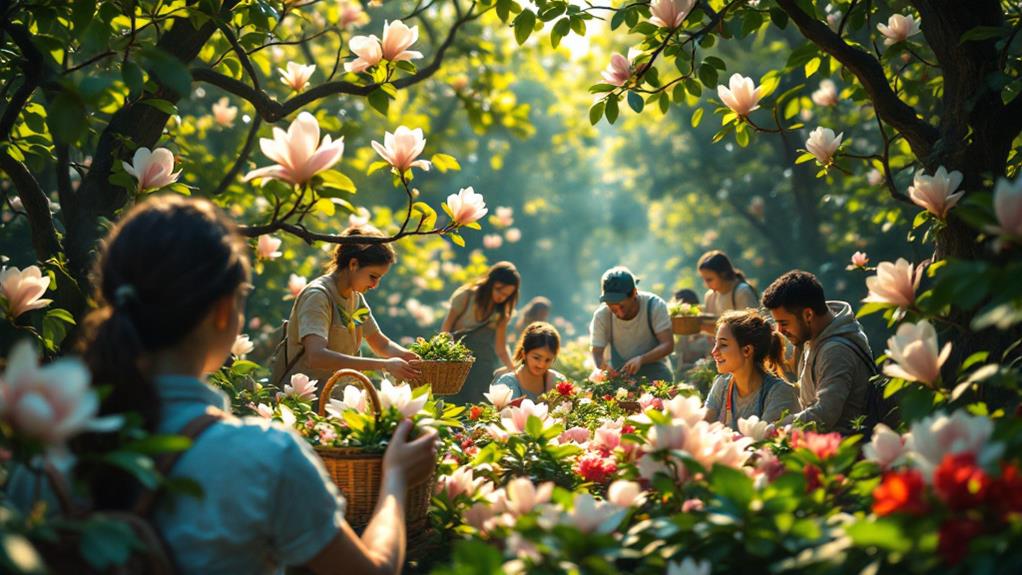
Community engagement can spark a sense of camaraderie and shared purpose. When you immerse yourself in foraging communities, you're not just learning about nature; you're gaining valuable insights into seasonal availability and the best ways to identify and harvest magnolia flowers safely. These communities often offer courses that teach participants about the different edible varieties of magnolias, guiding you on how to incorporate them into exciting culinary recipes.
Sharing experiences and recipes within these groups can ignite your creativity. Imagine crafting salads, syrups, or even pickled magnolia flowers while learning from others' successes and experiments. It's a delightful way to investigate new flavors and techniques.
Moreover, many foraging communities emphasize sustainable practices, ensuring that wild magnolia populations remain plentiful and undisturbed for future generations. By participating in community events focused on wild food awareness, you don't just improve your knowledge about the culinary and medicinal benefits of magnolia flowers; you also connect with like-minded individuals who share your passion for nature.

